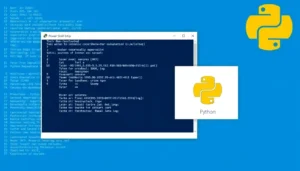How to Become a Crorepati in 10 Years: Your Ultimate Investment Guide
- THE MAG POST

- Aug 25
- 4 min read

Becoming a crorepati within a decade is a goal that many aspire to, but few actively plan for. It’s not about a sudden windfall, but rather a calculated and consistent approach to saving and investing. This guide will illuminate the essential strategies and financial planning required to transform this ambition into a concrete financial achievement within a 10-year timeframe, emphasizing how much and where to invest.
The journey requires a blend of foresight and discipline, understanding the power of compounding and the importance of diversification. We will explore how early investment, coupled with a well-structured plan, can pave the way for substantial wealth creation. Let's delve into the actionable steps you can take to make your aspiration of becoming a crorepati a reality.
Achieve Financial Freedom: Your 10-Year Crorepati Blueprint
Embarking on the journey to become a crorepati within a decade is an ambitious yet attainable goal. It requires a strategic approach to saving and investing, coupled with disciplined execution. This guide will illuminate the path, detailing how to allocate your funds and select the most promising investment avenues to maximize your wealth accumulation over a 10-year period.
The Power of Early Investment: Seeding Your Financial Future
The cornerstone of wealth creation is starting early. The principle of compounding, where your earnings begin to generate their own earnings, is most potent when given ample time to work its magic. Initiating your investment journey even a few years sooner can dramatically alter your financial trajectory, allowing your capital to grow exponentially.
Why Start Investing Now?
The market, while exhibiting fluctuations, has historically shown an upward trend over the long term. Delaying your entry means missing out on potential gains and the powerful effect of compounding. Every year you postpone investing is a year of lost growth. Consider this: even a modest sum invested early can outgrow a significantly larger sum invested later, thanks to the relentless power of compound interest.
Strategic Investment Planning
A well-defined investment plan is crucial. This involves understanding your financial goals, risk tolerance, and time horizon. For a 10-year goal of becoming a crorepati, a balanced portfolio is often recommended, typically including a mix of equities and debt instruments. The allocation will depend on your individual risk appetite, but a significant portion is usually directed towards equity-linked instruments for higher growth potential.
Calculating Your Crorepati Contribution: How Much to Invest?
Determining the exact amount you need to invest hinges on several factors, including your current financial standing, income, and the expected rate of return from your investments. However, a systematic approach can provide a clear roadmap. For instance, if you aim to accumulate ₹1 crore in 10 years and conservatively estimate an annual return of 12%, you would need to invest approximately ₹47,000 per month. This calculation underscores the importance of consistent, disciplined investing.
The Role of SIP in Wealth Accumulation
Systematic Investment Plans (SIPs) are a highly effective tool for achieving long-term financial goals like becoming a crorepati. By investing a fixed amount at regular intervals, SIPs help in averaging out the purchase cost over time, mitigating the risk associated with market volatility. This disciplined approach ensures that you continue investing regardless of market conditions, fostering steady wealth growth.
Diversifying Your Portfolio for Robust Growth
While equities often form the backbone of a growth-oriented portfolio, diversification is key to managing risk and enhancing returns. Consider incorporating other asset classes such as mutual funds, bonds, and even a small allocation to gold. Gold, in particular, often acts as a hedge against inflation and market uncertainty, providing a stabilizing element to your investment portfolio. A well-diversified portfolio is more resilient to market downturns and better positioned for sustained growth.
The Final Solution: Discipline and Consistency for Crorepati Status
Achieving the status of a crorepati in 10 years is not a matter of luck but a result of strategic planning, disciplined execution, and unwavering consistency. By starting early, investing systematically through SIPs, diversifying your assets wisely, and staying committed to your financial plan, you can indeed turn this aspiration into a tangible reality. Remember, the journey of a thousand miles begins with a single step, and in this case, that step is making your first informed investment.
Investment Strategy | Key Components | Benefit |
Early Investment | Systematic Investment Plans (SIPs) | Maximizes compounding, mitigates market volatility risk. |
Financial Planning | Goal setting, risk assessment, time horizon analysis | Provides a clear roadmap for wealth accumulation. |
Investment Allocation | Equities, Mutual Funds, Bonds, Gold | Diversifies risk, enhances potential returns, provides stability. |
Monthly Investment Calculation | Target amount (₹1 Crore), Timeframe (10 years), Expected Return (12%) | Approx. ₹47,000 per month needed for a 12% annual return. |
Consistency and Discipline | Regular investments, adherence to plan | Ensures steady growth and achievement of financial goals. |






















































Comments